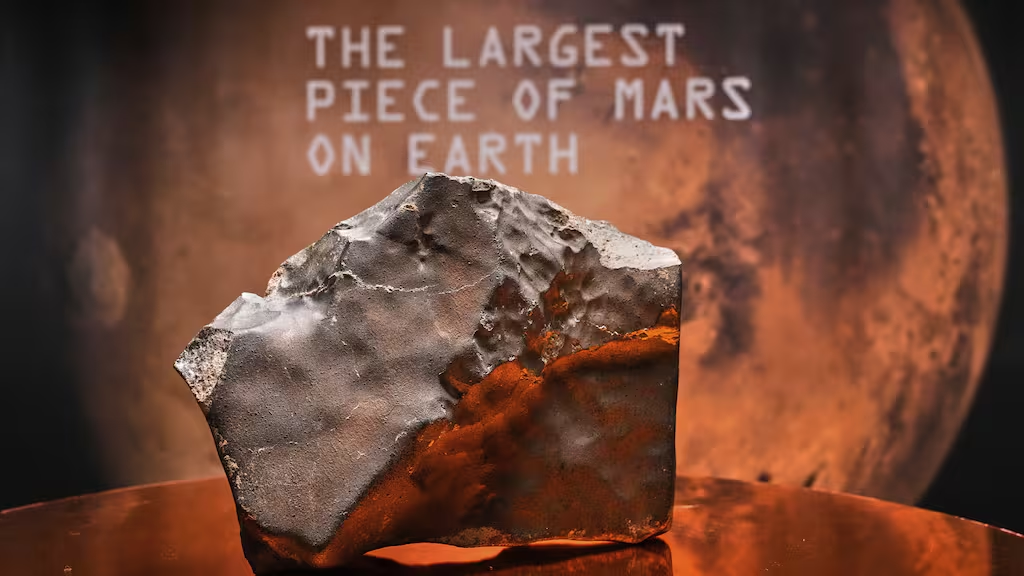Biggest piece of Mars on Earth up for auction

NEW YORK—For sale: A 54-pound (25-kilogram) rock with an estimated auction price of $2 million to $4 million.
Why so expensive? It’s the largest piece of Mars ever found on Earth.
Sotheby’s in New York will be auctioning on Wednesday what’s known as NWA 16788 as part of its Geek Week 2025, a natural history-themed sale that also includes other meteorites, fossils like a juvenile Ceratosaurus dinosaur skeleton more than 2 meters (6 feet) tall and nearly 3 meters (11 feet) long, and other gem-quality materials.
Sotheby’s said the meteorite is believed to have been blown off the surface of Mars by a massive asteroid strike before traveling 225 million kilometers (140 million miles) to Earth, where it crashed into the Sahara. A meteorite hunter found it in Niger in November 2023.
The red, brown and gray hunk is about 70 percent larger than the next largest piece of Mars on Earth and represents nearly 7 percent of all the Martian material on this planet. It measures nearly 15 inches by 11 inches by 6 inches (375 millimeters by 279 millimeters by 152 millimeters).
Rare find
It is also a rare find. There are only 400 Martian meteorites out of the more than 77,000 officially recognized meteorites found on Earth, Sotheby’s said.
Cassandra Hatton, Sotheby’s vice chair for science and natural history, said in an interview that a small piece of the meteorite was removed and sent to a specialized lab that confirmed it was from Mars. It was compared with the distinct chemical composition of Martian meteorites discovered during the Viking space probe that landed on Mars in 1976, she added.
The examination found that it is an “olivine-microgabbroic shergottite,” a type of Martian rock formed from the slow cooling of Martian magma. It has a course-grained texture and contains the minerals pyroxene and olivine.
It also has a glassy surface, likely due to the high heat that burned it when it fell through Earth’s atmosphere. “So that was their first clue that this wasn’t just some big rock on the ground,” Hatton said.
It’s not clear exactly when the meteorite hit Earth, but testing shows it probably happened in recent years.

















